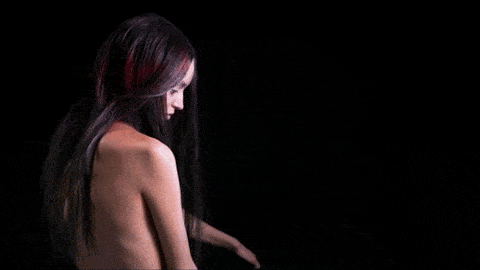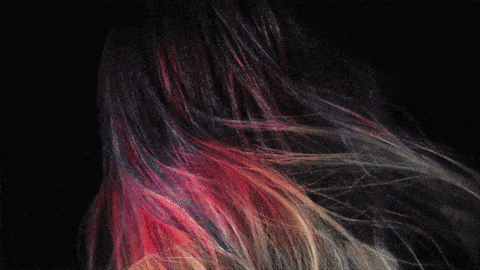A UK company has revealed a stunning new type of hair dye which changes colors based on temperature.
Unveiled at the London Fashion Week, the dye called Fire changes between two colors and comes in five variants: black (cold) to red (hot), black to white, silver to blue, blue to white, and black to yellow. The change happens between 15°C (59°F) and 31°C (88°F). It’s perfectly safe, you can wash it off after a few showers, and doesn’t damage your hair in any way (at least that’s what Forbes tells us).
The technology is based on something that’s not really new — thermochromic ink. This type of ink has been around for a long time, and it’s commonly used for text that changes color depending on temperature. The problem with thermochromic ink is that it’s quite toxic, so you wouldn’t want that on your hair. With that in mind, The Unseen, the company behind this new product, set out to reinvent it in a way that wouldn’t hurt you. According to them, they’ve replaced the toxic elements with “less toxic ingredients, which has required a significant amount of reformulation and testing.” They haven’t made the process completely public, as they want to commercialize the product in the near future.
However, we do know that the key element is a carbon-based molecule which undergoes a reversible reaction with itself when the temperature is changed. Above a certain temperature, one of the molecule’s forms is more stable than the other and takes over. Below that temperature, the opposite process happens.
At the moment, you can’t buy the product but The Unseen hopes to change that as soon as possible. Founder Lauren Bowker said:
“We are currently looking for a commercial client with the scale to license this technology from us bringing it to shelves as soon as possible,” Bowker said, adding they hoped to sell a range of colors and temperature effects.
What I like about this product is not just that it’s really cool — but it’s that I can see it raising a lot of interest in science. If you’re wearing a hair dye that changes colors, the odds are that you’re gonna know how it works. Also, the odds are your friends will ask you about it, you’ll tell them, and they’ll go: “That’s so cool!”. Without even realizing, they’ll learn some nifty things. So if you ask me, this has a lot of potential to draw young people into science — and we need more of this.





